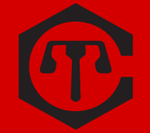 This repository centralizes the documentation and status of the on-going restoration of the custom-built 4x4' CNC router, affectionately named "Chico", found at the TC Maker hackerspace in Minneapolis, MN.
This repository centralizes the documentation and status of the on-going restoration of the custom-built 4x4' CNC router, affectionately named "Chico", found at the TC Maker hackerspace in Minneapolis, MN.
Chico is up and running as of 6/25/2017!
If you want to get trained on using the machine, start by reading through the wiki,
- Read the wiki for any and all documentation generated during the restoration process, including cabling/wiring schemas, mechanical component data, electronics datasheets, operational procedures, and more.
- Visit the projects page to see all of the active, upcoming, and completed tasks identified so far, broken down by sub-system.
- Visit the issues page to see the tasks that are currently being worked on, with detailed notes about what has already been done for each task. Note that these tasks are derived from the tasks marked as "In progress" in the projects section.
If you are interested in helping with documentation or helping to maintain this Github project (task management, wiki page writing, etc), shoot me a message so I can add you as a collaborator.
If you are someone who likes to cover all their bases and be as up-to-date as possible, the official channels of communication for TC Maker are:
- The TC Maker Google Group tends to be the place where some CNC router updates get posted, as well as cancellations to upcoming work plans.
- The TC Maker Facebook page might have some information too once in a while.







